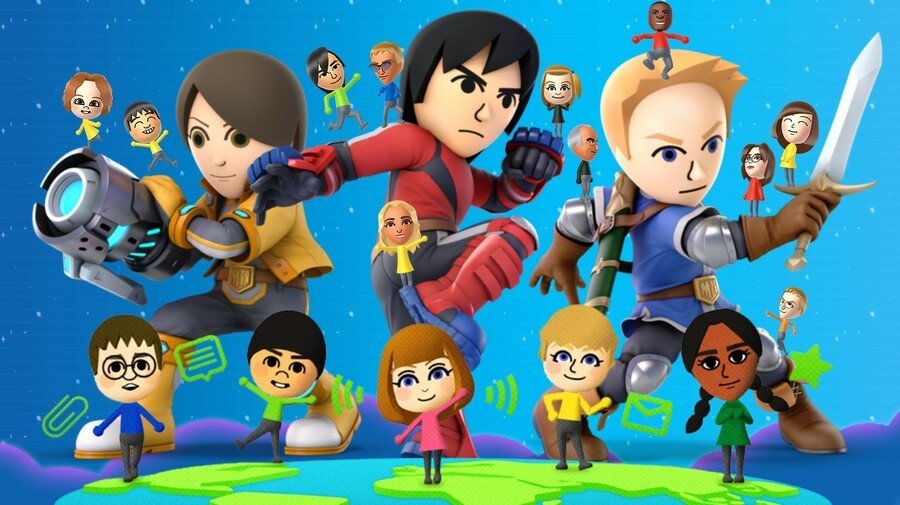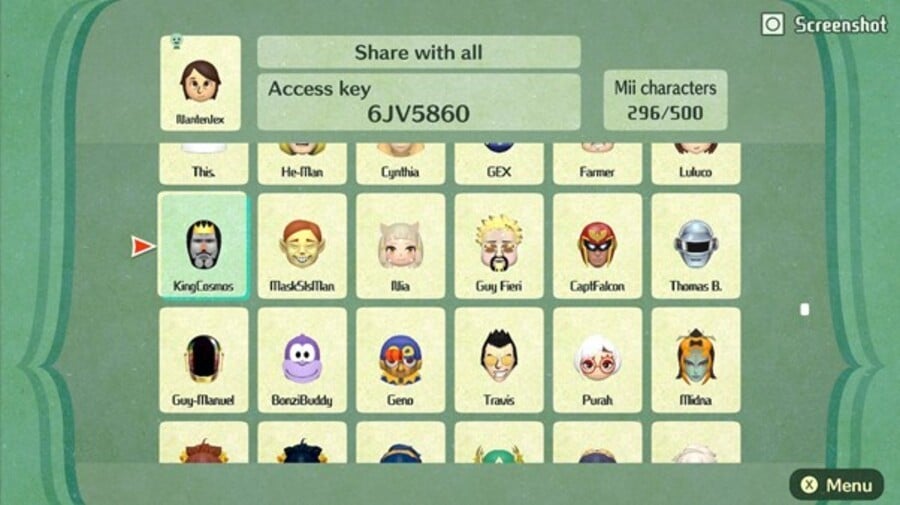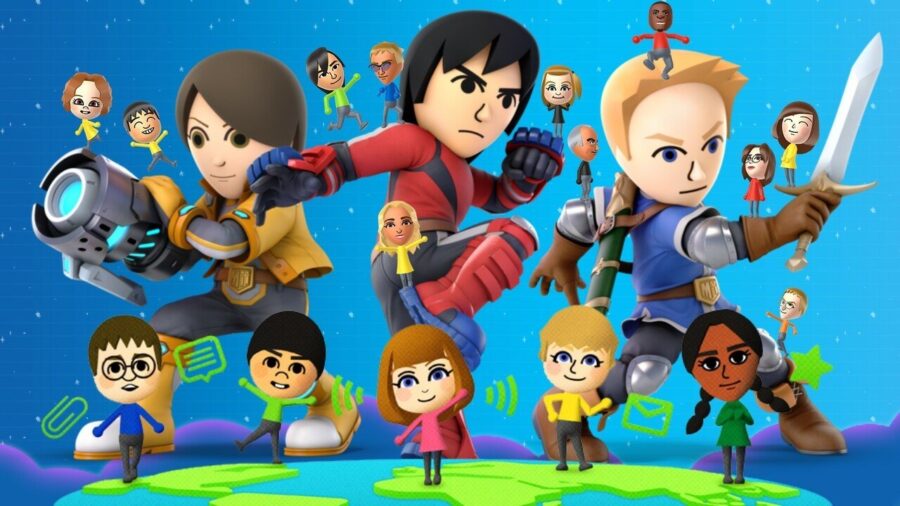
Ah, the Mii. We remember when we first made my own Miis back in 2006. Back then the most character customisation we had experienced was probably with The Sims, so making Miis of our friends, family and favourite video game characters was a fun pastime. It’s a real shame, then, that Nintendo stepped away from their Miis, presumably in an attempt to distance Switch from the Wii branding. These fun avatars are still around, of course — the Switch has its own Mii Maker hidden away — but it’s not as pronounced and they have certainly taken a back seat in recent years.
With that said, the launch of Miitopia on Switch this Friday sees Miis return in full force with its own enhanced Mii Maker utility, so we thought it would be fun to take a look back at the history of the Miis — what led to their development, their popularity and their eventual side-lining.
From the mind of Miiyamoto
The idea of making your own custom characters for video games was one that Nintendo had been brewing in their offices since as early as the NES days. Back on the Famicom Disk System, Shigeru Miyamoto thought it would be fun if players could use the console to create their own custom faces for characters that you could then control after inserting a separate ‘scenario disk’. As outlined by the man himself in a 2007 GDC keynote that charted the evolution of the Mii, a prototype was even developed but when Miyamoto presented his idea to the other higher-ups at Nintendo, they truly struggled to see how this could be turned into a fun game, and so the idea was shelved.
Miyamoto is known for his tenacity, however, and this idea wouldn’t go unused. He bided his time, waiting for technology to catch-up to his concepts and they make an actual game to go alongside this character-making software. And it would take two console generations before this happened, when Nintendo launched their second disk system add-on, the Nintendo 64 DD.
Say chiise!
With the enhanced power of the Nintendo 64 and the space provided by the 64DD’s proprietary disks, Nintendo revisited its character creation software and packaged it with a Japan-exclusive title called Mario Artist: Talent Studio, the second game in the Mario Artist line and a successor to the SNES game/creation suite Mario Paint. This 64DD game was all about making your own characters, called ‘Talents’, dressing them up in different outfits and then making short, 3D movies using the software. The Talents you made could even be imported and used to the other games in the Mario Artist line.
While you could just draw the Talents face using the in-game creation software, one of the big features that Nintendo promoted was the ability to take photos and use them to create your characters. A feature that was originally to be included in Rare’s Perfect Dark (until Nintendo said it didn’t like the idea of letting players shoot each other in the face), this face transfer could be done with either the Game Boy Camera, snapping a photo and using the Nintendo 64 Transfer Pack to import it to the game, or by using any camera that supported NTSC video output, and transferring the data using a bundled capture cassette. This allowed for incredible detail (for the time) on these characters, a level of fidelity that we are only really seeing matched with the new creator in Miitopia.
Talent Studio was unfortunately limited in its reach thanks to the 64DD never leaving Japan, so the vast majority of players worldwide never experienced it. Nintendo wasn’t about to let this creator idea go to waste, though, and so began working on a successor on the Nintendo GameCube called Stage Debut, eventually renamed Manebito. This title had a more advanced version of the Talent creator, retaining the ability to take photos of yourself with the Game Boy Camera, but also utilising Nintendo’s GBA e-Reader cards to allow you to transfer pre-made characters, like celebrities, into the game.
This concept was shown to the public in E3 2002 but it never found its way to release. Nintendo ran into the same problem again; once a character had been made, there wasn’t really anything to do with them, other than make goofy movies. The project was put on ice once again, and it looked like the end of Miyamoto’s character creation concept.
Time for Mii to shine
Unbeknownst to Miyamoto at this time, a completely separate team at Nintendo was working on Nintendo DS software and had developed a character creation suite of their own. Inspired by the look of kokeshi dolls, the models looked very similar to Miis and it impressed then-NCL president Satoru Iwata. He informed Miyamoto of the project and Miyamoto immediately jumped ship, abandoning his previous team and Manebito to work on this new ‘Kokeshi’ project.
The team still struggled to come up with a use for the characters, though. They could make a mini-game collection but were aware that eventually players would stop playing and the characters would go unused and unloved. Around that time, Wii was also in development and the team tasked with making Wii Sports was struggling to come up with an aesthetic. They had tried using Mario characters, which didn’t feel right. They wanted it to feel like the player was the one who was the Tennis pro, not some upstart Jack-of-all-trades ‘plumber’.
So, Wii Sports lacked characters and DS team’s character creation tool lacked a game. You can see where this is going.
Miyamoto approached the Wii Sports team, some of whom had worked on Talent Studio, and tasked them with turning this DS software into something that could work for Wii. The decision was made to open up the software to the entire Wii system, not just Wii Sports, to get around the issue of these avatars making a one-off appearance. There were even plans to bring back the option to turn your own photos into Miis by plugging an SD card into the Wii — this would be scrapped due to concerns that not many Wii users would want to go through the hassle of doing so.
The upcoming Mario Golf: Super Rush enables you to play using a Mii, although for a community who’ve now sampled Miitopia’s expanded toolset, it might be tough to go back to regular ‘old’ Miis.
And from that we have the Miis as we know and love them today. They would go on to be a Nintendo system staple for the Wii, 3DS and Wii U eras. The various ‘Wii’ line of games (Wii Play, Wii Party, Wii Music, etc) would stick to using these characters and the Mii would get further chances to shine in Tomodachi Collection for DS (in Japan) and the 3DS follow-up, Tomodatchi Life. The original 3DS Miitopia gave the avatars their own RPG, they would form an integral part of the Wii U’s much-missed social hub Miiverse, and would also go on to be used in other games such as Mario Kart and Super Smash Bros. which let players race and fight alongside Nintendo’s iconic mascots. And who can forget the ill-fated mobile experiment Miitomo? We certainly can’t.
So, that brings us to the end of our look at the long and turbulent history of the Mii, a concept almost 20 years in the making. The announcement of Miitopia for Switch was something of a surprise, and its more advanced Mii creator has attracted a talented base of players going to town with some seriously impressive creations, much like we did back in 2006 when the Wii launched. The upcoming Mario Golf: Super Rush enables you to play using a Mii, although for a community who’ve now sampled Miitopia’s expanded toolset, it might be tough to go back to regular ‘old’ Miis.
Regardless, perhaps Miitopia on Switch is a sign that Miis have more life left in them yet. If that’s so, we cannot wait to see what crazily creative plans Nintendo has in store for them.

Nintendo Life | Latest Updates
Source link
Related Post:
- Yu-Gi-Oh! Duel Disk modded into a Final Fantasy XIV Controller
- My Nintendo adds Famicom Detective Club wallpaper in North America
- Famicom Detective Club dev wants to make a new entry in the series
- Fire Emblem: Genealogy Of The Holy War Is Joining Japan’s NSO Super Famicom Library
- Famicom Detective Club Remake Producer Would Like To Make A New Game In The Series
- Famicom Detective Club producer is interested in making new game in the series
- Shin Megami Tensei If Is Being Added To Japan’s NSO Super Famicom Collection
- Nintendo on Switch OLED: “The configuration and functionality is the same as that of the Joy-Con controllers for the Nintendo Switch system”
- Nintendo Entertainment System – Nintendo Switch Online update out now (version 5.3.0)
- Reminder: Miitopia and the blue Nintendo Switch Lite system both launch today
